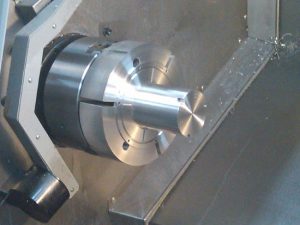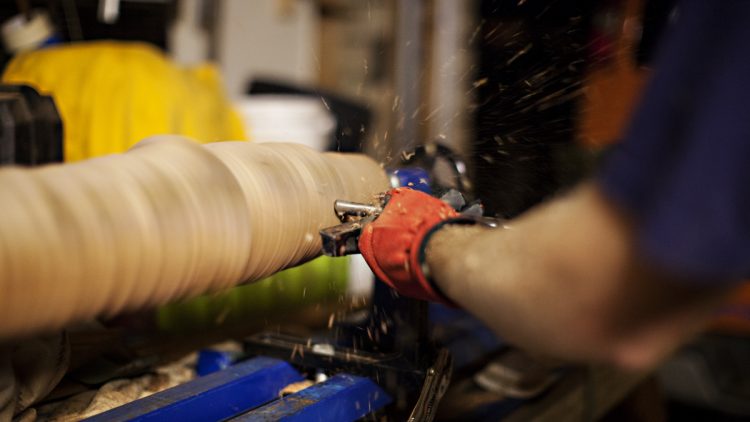For beginners, using a wood lathe can seem like a daunting task. This post will cover how to use the wood lathe and all of its components.
Wood Lathe Components
Here is a complete list of parts to know:
Size
Lathe size is determined by two factors. One factor is measuring the distance from the center of the spindle to the surface of the bed (determines maximum diameter limit). Another way to figure out size is by measuring the distance from the end of the spindle to the inside end of the tailstock. This will tell you what the length of the piece should be.
Headstock
The headstock is located to the left when viewing from the front of the lathe. Essentially, the headstock is the business end of the lathe, creating power by the motor being applied to wood. Some headstocks can come fixed in place, while others may rotate a full 360 degrees. Some headstocks can travel down the entire length of the lathe, as well. All of these options give you the ability to turn larger diameter pieces.
Spindle
Spindles are powered by belts and pulleys, with wood attached to the piece. The spindle is threaded on the outside of the lathe. It is located here in order to accept various attachments and accessories. The accessories are typically held in place by a specific taper. Tapers will vary by size.
Toolrest
Adjustable by both height and rotation, the toolrest can be moved along the length of the bed. This is made possible by loosening the banjo, then retightening it to find the desired position.
Motors
Modern lathes will utilize electric motors, while others use a hydraulic motor instead. The motors can be configured as fixed speed, variable speed, A/C, D/C, electronic braking and single rotation. Many motors will use drive through pulleys.
Tailstock
Tailstock is found farthest from the headstock, although it can be moved and adjusted, if needed. There is a movable part which can be driven by a hand wheel/screw mechanism. This part is usually hollow and fitted with morse taper to accommodate accessories.
Bed
The bed is the part of the lathe on which everything is mounted. The bed can be constructed of timber, steel, machined cast iron or round tubes.
Accessories
Here are a few accessories that may come with your lathe: knockout bar, wrenches, center for the tailstock and a faceplate. It is possible to add another toolrest to your application.

How To Use A Wood Lathe Machine
This next section will cover how to set up and operate the wood lathe machine.
Setting Up Wood Lathe
Begin this process by properly setting up your wood lathe machine. Make sure the machine is completely switched off before setting it up. Organize the tools as you set up and utilize the positional holding of the toolrest, at this time. Choosing the correct tool-bit is crucial, as the wrong selection could end up damaging your piece. Dull bits can also cause damage, so make sure the bits are sharp and ready for use.
High-speed steel is typically recommended for blades. Blades constructed of materials like carbon steel can become dull in a very short period of time. It’s always best to cut into the wood to form a 90-degree angle, but this changes over time as you become more skilled using the machine.
Wood Lathe Operation
After set-up is complete, start the process of turning the machine at the recommended 90-degree angle. Use the tailstock wheel to get the tailstock into the optimal position. The stock you are working on needs to be above the spindle of the headstock and inside the spur center. Turning the wheel of the tailstock will get this in position for you.
Always ensure your stock is tight. When loose, this can fly off and cause major damage. The tool-rest needs to be in line with the stock, with a comfortable amount of distance between the bit and stock. Try for a distance of 3/4-inch. Turn your wood lathe on next. Start it in the lowest possible speed.
For future projects, the speed you choose will be directly related to the type of wood you are cutting. You will undoubtedly notice the amount of resistance against you when your tool-bit cuts into the wood. A lot of resistance is normal as you cut.
At this time, bits of the wood stock should start falling off. As you dive into the stock with your blade, make sure you cover all directions. Tool-bits will differ depending on the task, so try to practice on spare stock ahead of time.
Water Jet Cutting Services
East Valley Precision offers water jet cutting services near Phoenix & Chandler, Arizona. Contact East Valley Precision today!



